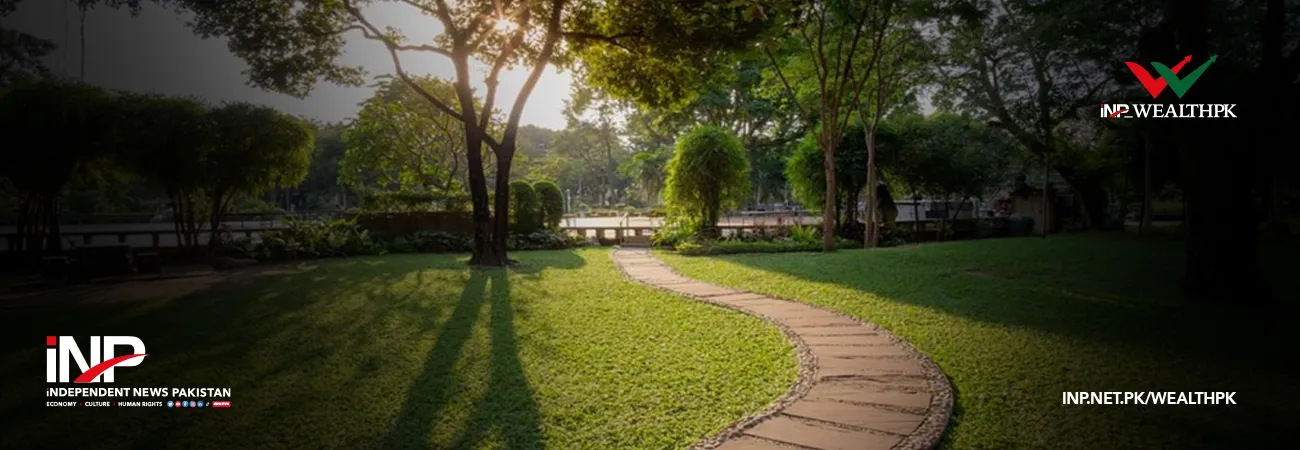INP-WealthPk
Faiza Tehseen
Fostering urban forestation is direly needed in Pakistan to mitigate the environmental impacts due to rapid urbanization. It is necessary now to offset the carbon footprint to build resilient and sustainable cities. It will develop a culture of investing in green infrastructure and environmental stewardship that will lead to future socio-economic safety as well, environmentalist and Director of Clifton Urban Forest, Karachi Masood Lohar told WealthPK. He said, “Pakistan is critically facing the challenge of balancing the increasing urbanization through environmental preservation. The urban centers are particularly experiencing significant environmental degradation, deforestation, and both air and noise pollution. The existing forest cover in Pakistan is about 1%, which should be at least 20%. About 90% of the population prepares food by burning biomass and its emissions are affecting the environment badly by destroying the air quality, causing heat waves and disastrous floods. To mitigate the detrimental effects of climate change, urban forestation has emerged as a vital solution in Pakistan”.
Masood Lohar said urban forestation was characterized by densely planted trees, and green areas within urban zones that extensively absorb carbon emissions, enhance air quality, regulate temperature, and retain ecology. Globally, urban forestation establishment is gaining momentum for the cities grappling with increasing pollution. Urban forestation is expected to act as a proactive measure to enhance environmental stability by offsetting carbon emissions. Trees play a vital role in sequestering carbon dioxide – a major contributor to global warming. It is high time that policy makers in pakistan consider it and initiate awareness campaigns to achieve the goal. Talking to WealthPK, Chief Conservator of Forests in the northern forest region, Muhammad Yousaf Khan said, “Other than burning, timber in great quantities can be used in cities to serve a variety of purposes including construction, furniture of all types, and ornamentation. When timber is produced from forests, in return new plantations take place.
The new plantation groups sequester and offset carbon. When the timber is taken away to use for any of the said purposes, carbon remains stored in it for centuries if no accidental fire occurs”. He said, “If timber is not taken out of the woods, the tree decays or decomposes after completing its life cycle. So, when the new trees are planted, it does not matter whether they remain in the natural forest or belong to urban forestry; they continue to grow and start carbon sequestration as soon as they grow. “In urban areas, whether a tree is planted in the courtyard or at any place, it quickly sequesters carbon emissions released in the air through vehicles, industrial units, or domestic gas burning,” Yousaf said. “The tree is useful when sequestering carbon but when it starts decomposing, it becomes useless. It is same as that you fill water from a spring and then pour it again into it. The drawn water will be useful if you take it away and consume it for another purpose rather than spilling it aimlessly.
So, the case is the same regarding trees when the timber is consumed to craft anything like doors, or panelling in your homes and offices, then it is stored or offset or shelved. It is called offsetting by shelving. Now, the shelved material keeps carbon storage but if it is burned or decomposed, it will release the stored carbon into the air and its whole growth period goes wasted”. Quoting another example, he said the grass grown on your lawn also sequesters carbon and when it is grazed by animals, the carbon stored in it becomes part of their body and remains stored till their life cycle is completed. After their death, the body decomposes/decays and the carbon is again released into the air. So, timber is a fine way to shelf carbon because the life shelving of a tree is for a long time. Yousaf said urban forestation was necessary to meet the environmental challenges but the most important factor was to bring awareness at the national level.
Credit: INP-WealthPk













